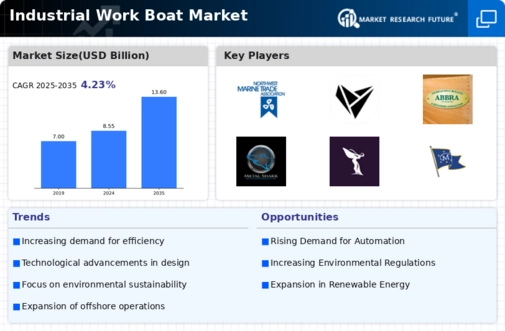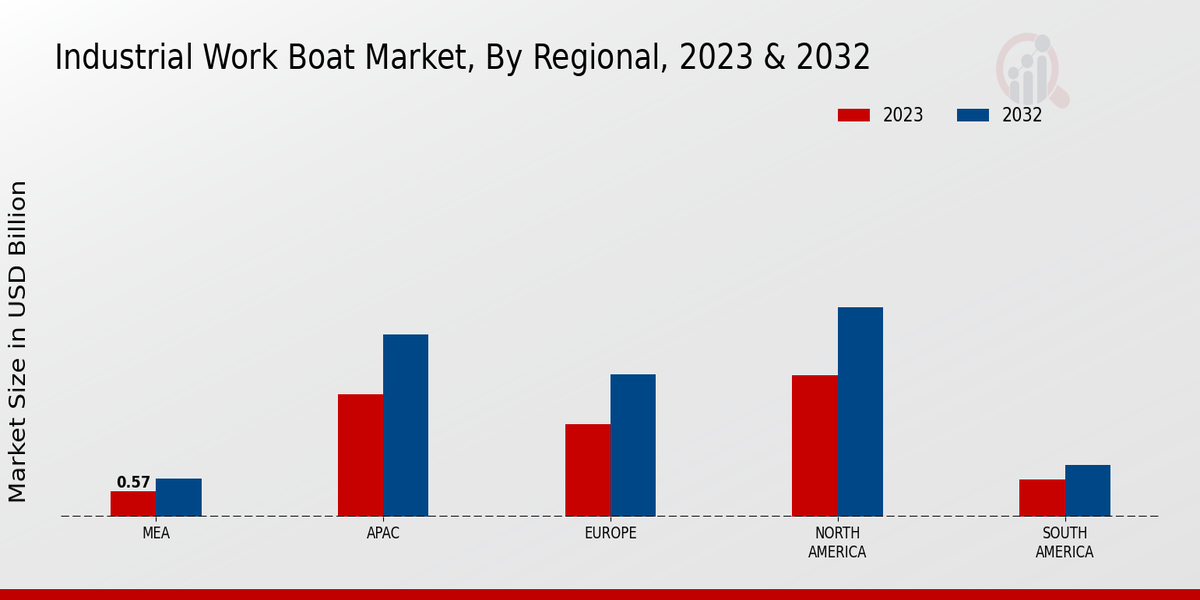Growing Demand for Marine Transportation
The Global Industrial Work Boat Market Industry experiences a notable increase in demand for marine transportation services. This surge is primarily driven by the expansion of offshore oil and gas exploration activities, which require specialized vessels for support operations. In 2024, the market is projected to reach 8.55 USD Billion, reflecting the industry's critical role in facilitating resource extraction. Additionally, the rise in global trade and the need for efficient logistics solutions further bolster the demand for work boats. As economies continue to grow, the reliance on marine transportation is likely to intensify, positioning the Global Industrial Work Boat Market Industry for sustained growth.
Technological Advancements in Vessel Design
Innovations in vessel design and technology significantly influence the Global Industrial Work Boat Market Industry. The introduction of advanced materials and propulsion systems enhances the efficiency and performance of work boats. For instance, the adoption of hybrid and electric propulsion technologies is gaining traction, reducing environmental impact and operational costs. These advancements not only improve fuel efficiency but also comply with stringent environmental regulations. As a result, operators are increasingly inclined to invest in modern vessels, contributing to the market's expansion. The ongoing technological evolution suggests that the Global Industrial Work Boat Market Industry will continue to adapt to changing demands and regulatory frameworks.
Regulatory Compliance and Environmental Standards
The Global Industrial Work Boat Market Industry is shaped by stringent regulatory compliance and environmental standards. Governments worldwide are implementing regulations aimed at reducing emissions and promoting sustainable practices in marine operations. This trend compels operators to upgrade their fleets to meet these standards, driving investments in modern work boats. The emphasis on sustainability is likely to create opportunities for manufacturers that offer eco-friendly solutions. As the industry adapts to these regulations, the market is expected to grow, with projections indicating a market value of 13.6 USD Billion by 2035. This shift underscores the importance of compliance in shaping the future of the Global Industrial Work Boat Market Industry.
Increased Investment in Infrastructure Development
Infrastructure development plays a pivotal role in the growth of the Global Industrial Work Boat Market Industry. Governments and private entities are investing heavily in port facilities, offshore wind farms, and other maritime infrastructure projects. These developments necessitate the use of work boats for construction, maintenance, and support operations. As countries prioritize infrastructure enhancement to boost economic growth, the demand for industrial work boats is likely to rise. This trend aligns with the projected CAGR of 4.3% for the period from 2025 to 2035, indicating a robust outlook for the Global Industrial Work Boat Market Industry as it supports critical infrastructure initiatives.





















Leave a Comment